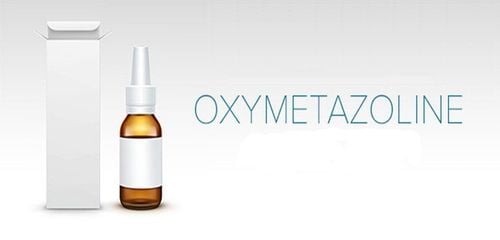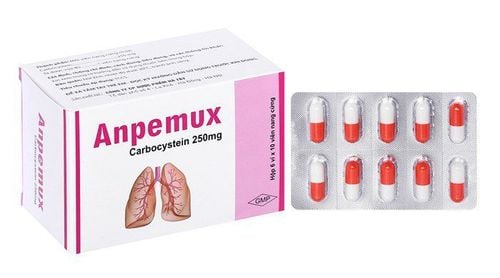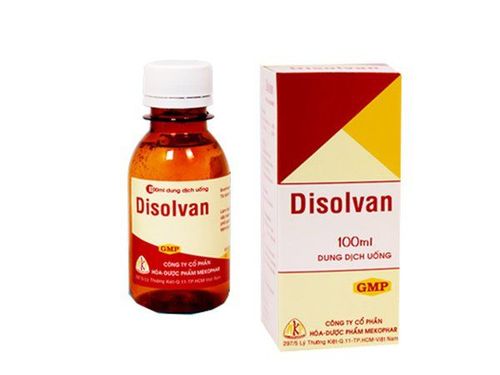This is an automatically translated article.
Trikadinir is a broad spectrum 3rd generation Cephalosporin antibiotic. It is used to treat many types of infections caused by bacteria sensitive to Cefdinir.1. Trikadinir uses
Trikadinir has the main ingredient Cefdinir 125mg, which is a broad spectrum 3rd generation Cephalosporin antibiotic. The drug is used to treat a wide variety of infections caused by both Gram-negative and Gram-positive bacteria and bacteria resistant to Beta-lactamase by inhibiting the formation of parietal cells and thereby killing the bacteria. Trikadinir is produced in the form of oral powder packs, each pack is 1.5g with the content of Cefdinir 125mg.Trikadinir is indicated for the treatment of the following infections:
Adults and adolescents:
Community-acquired pneumonia. Acute bronchitis. Chronic bronchitis exacerbation. Acute maxillary sinusitis. Pharyngitis or tonsillitis. Uncomplicated skin and subcutaneous tissue infections. Children:
Otitis media . Pharyngitis, tonsillitis. Uncomplicated skin and subcutaneous tissue infections.
2. Dosage and usage of Trikadinir
2.1. Usage of the drug Trikadinir Akedi is prepared in the form of a powder package for oral solution, each pack of 1.5g contains 125mg of Cefdinir. The patient takes the drug under the direction of the doctor and should carefully read the instructions for use on the leaflet.
2.2. Dosage of Trikadinir The dose of Trikadinir drug may vary depending on factors such as: Age, weight, infection status of the patient, drug history, special subjects (women with high blood pressure). pregnancy and lactation, patients with liver failure, kidney failure). Patients should use the dose prescribed by the doctor, do not change the dose on their own.
Patients can refer to the following drug dosage:
Acute bacterial otitis media: Oral 7mg/kg/time x 2 times/day for 5-10 days or 14mg/kg/time x 1 time/day for 10 days day. Acute maxillary sinusitis: Oral 7mg/kg/time x 2 times/day or 14mg/kg/time x 1 time/day, for 10 days. Pharyngitis, tonsillitis: Oral 7mg/kg/time x 2 times/day for 5-10 days, or oral 14mg/kg/time x 1 time/day for 10 days. Uncomplicated skin and skin structure infections: Oral 7mg/kg/time x 2 times/day for 10 days. Patients with renal impairment: Creatinine clearance < 30ml/min: Dose 7mg/kg/time/day (maximum 300mg). Patients on peritoneal dialysis: Start at a dose of 7mg/kg every 2 days. At the end of a peritoneal dialysis, an additional dose of 7mg/kg/time should be used and the next dose should be administered every 2 days.
3. Contraindications of the drug Trikadinir
Trikadinir absolutely must not be used in the following cases:
Patients with a history of allergy, hypersensitivity to any ingredient of the drug. Patients with a history of allergy, hypersensitivity to Beta-lactam drugs (Penicillin, Cephalosporin).
4. Undesirable effects of drugs
The possible side effects during the use of Trikadinir drugs are as follows:
On the skin and systemic reactions: Itching, maculopapular rash, rash. In some cases, there is swelling of the face, throat and vocal cords (Quincke's edema). Digestive system: Abdominal pain, nausea, vomiting, dry mouth, anorexia, constipation, pseudomembranous colitis, increased liver enzymes. Nervous system: Insomnia, dizziness, drowsiness. Blood: Increased neutrophils, eosinophils, leukopenia. Renal-urinary system, genitourinary: Vaginitis.
Precautions while using Trikadinir
When using Trikadinir, the following precautions should be taken:
Due to cross-reactivity between penicillins and cephalosporins, the patient must inform the doctor about his/her allergy to penicillin or other drugs. Diarrhea due to Clostridium difficile has been reported with the use of nearly all antibiotics, including Trikadinir. Patients with pseudomembranous colitis, diarrhea should inform their doctor before using Trikadinir. Patients with long-term use of Trikadinir, suspected or diagnosed diarrhea caused by Clostridium difficile need to be rehydrated, appropriate electrolytes, protein supplements, antibacterial treatment of C.difficile. Long-term use of Trikadinir may increase the risk of developing drug-resistant bacteria and increase the growth of fungi and yeast. For pregnant women: If you are pregnant and want to use Trikadinir or are using the drug, find out that you are pregnant, you need to talk to your doctor, only use the drug in pregnant women when indicated. doctor when the benefit of the drug outweighs the risk factor. For women who are breastfeeding: Trikadinir with a dose of 600mg, has not been detected in breast milk. Can be used for this subject but need to strictly adhere to the dosage prescribed by the doctor. For people who are driving or operating machinery: Because Trikadinir can cause headaches and dizziness, it should be used with caution when driving, operating machinery or doing work that requires alertness.
Trikadinir drug interactions
When taking Trikadinir, patients should be aware of the following drug interactions:
Aluminum or magnesium antacids: Change the bioavailability of Trikadinir, need to take these 2 drugs at least 2 hours apart. Probenecid: Inhibits the renal tubular excretion of Trikadinir, increasing the concentration of this active substance in the blood. Iron and iron preparations: Decreases absorption of Trikadinir and may produce slightly red stools. Above is all information about Trikadinir drug, patients need to carefully read the instructions for use, consult a doctor / pharmacist before using. Note, Trikadinir is a prescription drug, you need to use it as prescribed by your doctor, absolutely do not self-treat at home.













